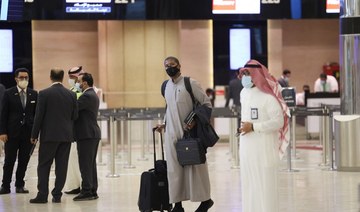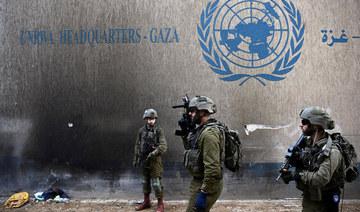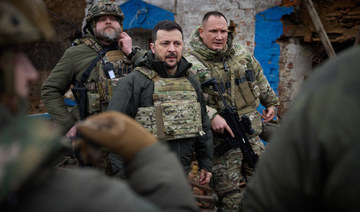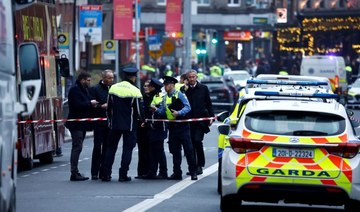MADRID: Juan Esteban Mariño, a healthy 29-year-old, has been part of the rare cohort in Spain who have resisted health authorities’ strong recommendations to get their vaccine shots.
His position only changed when he planned an end-of-the-year holiday in Portugal, where authorities are cracking down on unvaccinated visitors as they confront a surge of infections and try to limit the spread of the omicron variant.
“I needed to get the jab to leave the country and return without any inconveniences,” Mariño said Wednesday at a large vaccination center in Madrid as he pressed sterile gauze against his left arm and rolled down his sleeve.
“With the new variant and restrictions complicating life, getting the vaccine has become unavoidable,” he added.
Long lines for getting vaccines have returned to Portugal and Spain, two neighboring European Union nations that, despite having inoculation figures that are the envy of the world, are stepping up efforts to close the gap on the few residents still unvaccinated. Both nations have reported cases of the omicron variant.
People at the Wizink Center, a large concert hall turned into a “vaccine-drome” in the Spanish capital of Madrid, give an array of reasons why they didn’t get their shots sooner. In addition, many people over 60 were lining up for booster shots, which authorities want to extend soon to younger groups.
But, like Mariño, many say that proving they are either vaccinated or have recovered recently from COVID-19 is becoming compulsory in many places that had resisted the health passes until now.
Iris Reichen, a 61-year-old German-Spanish interpreter, said she was compelled to get her first shot by reports about the fast-spreading omicron variant, whose possible impact is still being considered by health experts, and because her social life had suffered.
“Friends no longer invite the nonvaccinated to their private dinners,” she said.
A recent survey by Spain’s polling institute, CIS, showed that about a third of the 1.6 million adults who remain unvaccinated in Spain were still planning to get their shots. But nearly 3 percent of those polled — the equivalent of 1 million people if the figure was extrapolated to the country’s total population — were planning to avoid it.
The poll, which CIS conducted last month before some Spanish regions introduced mandatory COVID-19 passes, showed that the resistance was across the political spectrum but more prevalent among the middle-class with higher education.
In an internal report leaked Wednesday, a panel of experts advising Spanish health authorities warned against the “false security” that the health certificates can give in a country where nearly 90 percent of those eligible for a vaccine already got their shots. The experts insisted that mask-wearing, which is mandatory in enclosed spaces and a common sight in the streets of Spain, and other social-distancing measures are still more effective against contagion.
Authorities in the northeastern Catalonia region have reopened mass vaccination venues for jabs and are allowing people to get walk-in appointments after announcing that the health certificates will be needed to enjoy everything from a meal in a restaurant to a concert.
Catalan Public Health Secretary Carmen Cabezas said that “both first shots and second shots are increasing” and that over the past week alone, authorities had seen an 81 percent increase in first vaccine doses given out compared to the previous week.
In some instances, police had to be summoned to help disperse crowds forming long after the vaccination centers’ scheduled closing hours.
Long lines formed also in Lisbon, where Portugal’s largest vaccination center to date opened for the first time on Wednesday as authorities tried to encourage the 2 percent of the population who are not vaccinated yet — Europe’s lowest rate— and speed up giving out booster shots.
Despite the country’s excellent vaccination record, cases have been rising nonstop over the past two months, although hospitalizations are far away from the worrying levels seen in previous surges. An outbreak of the omicron strain among members of a professional soccer club in Lisbon and a medical worker who had contact with them has also added to concerns.
Starting Wednesday, Portuguese authorities were tightening passenger entry requirements and mandated masks indoors as the country entered a “state of calamity.” The crisis declaration, Portugal’s second this year, is one step below a state of emergency and gives the government the authority to impose stricter measures without parliamentary approval.
Masks now are required in enclosed public spaces, and individuals must show proof of vaccination, having recovered from COVID-19 or a negative virus tests to enter restaurants, cinemas, gyms and hotels. Nightclubs, hospitals, nursing homes and sports venues also require tests from visitors and patrons, including vaccinated ones.
“With the test, we feel more comfortable. We don’t leave the club thinking, ‘Do I have COVID or not?’” Sara Lopes, a 21-year-old shop worker, said at a Lisbon nightclub as the new requirements took effect at midnight.
“It’s a bit of a hassle to have to make appointment after appointment at the pharmacy, but it’s fine,” she said.
Vaccine champions Spain, Portugal focus on the reluctant few
https://arab.news/j52bh
Vaccine champions Spain, Portugal focus on the reluctant few
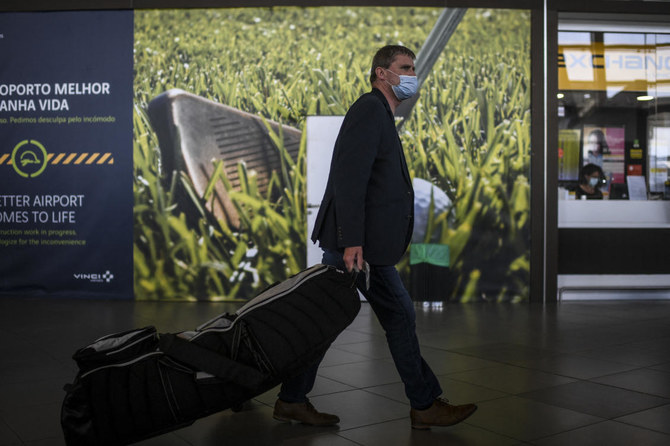
- Long lines for getting vaccines have returned to Portugal and Spain
- Authorities in the northeastern Catalonia region have reopened mass vaccination venues for jabs
Netherlands remembers World War Two dead amid tight security due to Gaza war
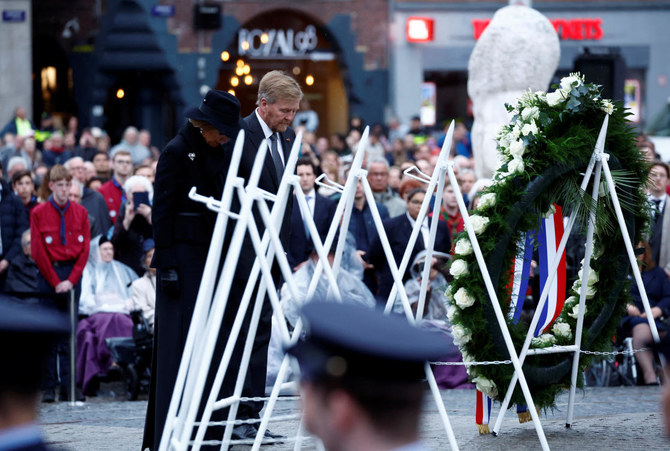
- Normally some 20,000 people attend the Dam commemoration
- Earlier this week municipal authorities announced unprecedented security measures to keep the ceremony safe and avoid possible disruptions linked to the Israel-Hamas war
AMSTERDAM: Dutch King Willem-Alexander and Prime Minister Mark Rutte joined around 4,000 people on Saturday for the country’s annual World War Two remembrance ceremony amid restricted public access and heightened security due to the war in Gaza.
The ceremony on Amsterdam’s central Dam square, with the traditional two minutes of silence at 8 p.m. (1800 GMT) to commemorate the victims of World War Two, passed smoothly despite fears that there might be protests.
Normally some 20,000 people attend the Dam commemoration without having to register. But earlier this week municipal authorities announced unprecedented security measures to keep the ceremony safe and avoid possible disruptions linked to the Israel-Hamas war.
At the opening of a Holocaust Museum in Amsterdam in March, pro-Palestinian protesters opposed to Israel’s military campaign in Gaza set off fireworks and booed Israeli President Isaac Herzog as he arrived on a visit.
Every town and the city in the Netherlands holds its own remembrance ceremony on May 4 and tens of thousands of people attend the events. The Netherlands then marks on May 5 the anniversary of its liberation from Nazi occupation in 1945.
Drone footage shows Ukrainian village battered to ruins as residents flee Russian advance
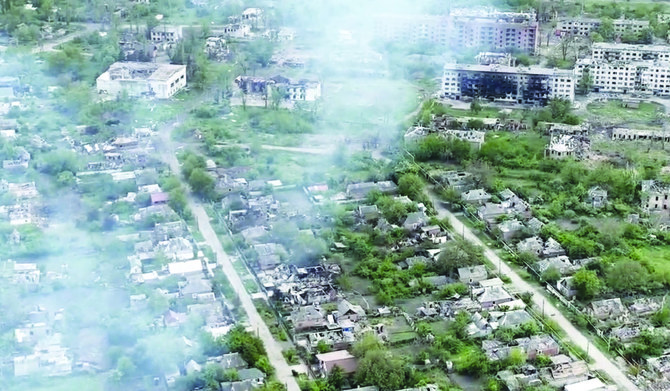
- Residents have scrambled to flee the village, among them a 98-year-old woman who walked almost 10 kilometers (6 miles) alone last week, wearing a pair of slippers and supported by a cane, until she reached Ukrainian front lines
KYIV: The Ukrainian village of Ocheretyne has been battered by fighting, drone footage obtained by The Associated Press shows. The village has been a target for Russian forces in the Donetsk region of eastern Ukraine.
Russian troops have been advancing in the area, pounding Kyiv’s depleted, ammunition-deprived forces with artillery, drones and bombs. Ukraine’s military has acknowledged the Russians have gained a “foothold” in Ocheretyne, which had a population of about 3,000 before the war, but says that fighting continues.
Residents have scrambled to flee the village, among them a 98-year-old woman who walked almost 10 kilometers (6 miles) alone last week, wearing a pair of slippers and supported by a cane, until she reached Ukrainian front lines.
FASTFACT
Ukraine’s military has acknowledged the Russians have gained a “foothold” in Ocheretyne, which had a population of about 3,000 before the war, but says that fighting continues.
Not a single person is seen in the footage, and no building in Ocheretyne appears to have been left untouched by the fighting. Most houses, apartment blocks and other buildings look damaged beyond repair, and many houses have been pummeled into piles of wood and bricks. A factory on the outskirts has also been badly damaged.
The footage also shows smoke billowing from several houses, and fires burning in at least two buildings.
Elsewhere, Russia has in recent weeks stepped up attacks on Kharkiv, Ukraine’s second-largest city, in an attempt to pummel the region’s energy infrastructure and terrorize its 1.3 million residents.
Four people were wounded and a two-story civilian building was damaged and set ablaze overnight after Russian forces struck Kharkiv, in northeastern Ukraine, with exploding drones, regional governor Oleh Syniehubov said Saturday.
The four, including a 13-year-old, were hurt by falling debris, he said on the Telegram messaging app.
Russian state agency RIA reported Saturday reported that Moscow’s forces struck a drone warehouse in Kharkiv that had been used by Ukrainian troops overnight, citing Sergei Lebedev, described as a coordinator of local pro-Moscow guerrillas. His comments could not be independently verified.
Syniehubov said Russia also bombed Kharkiv on Friday, damaging residential buildings and sparking a fire. An 82-year-old woman died and two men were wounded.
Ukraine’s military said Russia launched a total of 13 Shahed drones at the Kharkiv and Dnipropetrovsk regions of eastern Ukraine overnight, all of which were shot down by Ukrainian air defenses.
Students in Ireland, Switzerland join the protest wave over Gaza
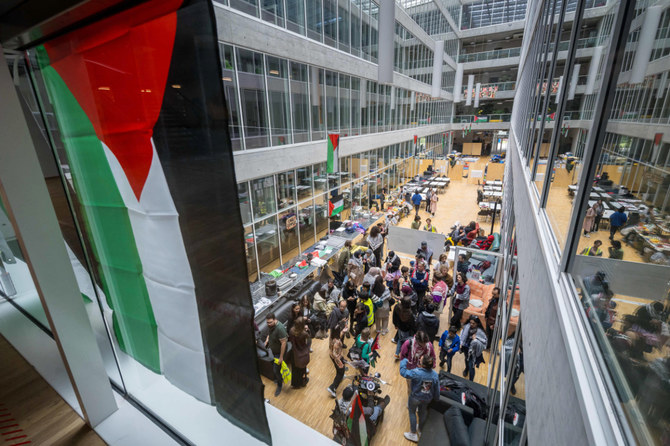
- Dublin students build encampment, forcing university to restrict campus access and close Book of Kells exhibition
- Israel has killed more than 34,000 Palestinians in Gaza, mostly women and children, according to the health ministry in the Hamas-run territory
DUBLIN: Students at Trinity College Dublin and Lausanne University in Switzerland have staged occupations to protest against Israel’s war in Gaza, joining a wave of demonstrations sweeping US campuses.
In Dublin, students built an encampment on Friday, forcing the university to restrict campus access on Saturday and close the Book of Kells exhibition, one of Ireland’s top tourist attractions.
The camp was set up after the students’ union said the university had fined it €214,000 ($230,000) for losses caused by protests in recent months, not exclusively over Gaza.
The protesters were demanding that Trinity cut academic ties with Israel and divest from companies with ties to Israel.
BACKGROUND
The protesters were demanding that Trinity College Dublin cut academic ties with Israel and divest from companies with ties to Israel.
Students’ union president Laszlo Molnarfia posted a photograph of benches piled up at the entrance to the building housing the Book of Kells, an illuminated manuscript created by Celtic monks in about 800 AD.
Trinity College said it had restricted access to students, staff, and residents to ensure safety and that the exhibition would be closed on Saturday.
More than 34,600 Palestinians have been killed in Israel’s seven-month-old assault on the Gaza Strip, say health officials in the enclave.
The war began when Hamas militants attacked Israel on Oct. 7.
Pro-Palestinian protests have also been held at universities in Australia and Canada.
In Lausanne, around 100 students occupied a building to back demands, including an end to scientific cooperation with Israel.
“Palestinians have been dying for over 200 days, but we are not being heard,” one protester told Swiss television on Saturday.
“There’s a global movement to get governments to take action, but it’s not happening. That’s why we want to get universities involved now.”
The university said the occupation could continue until Monday, provided it did not disrupt work on campus.
“We universities are not called upon to take political stands,” the university’s rector, Frederic Herman, told RTS radio.
Last week, the head of Trinity College, Linda Doyle, said it was reviewing its investments but that it was for individual academics to decide whether to work with Israeli institutions.
Sadiq Khan, Pakistani immigrant bus driver’s son, makes history by winning third term as London mayor
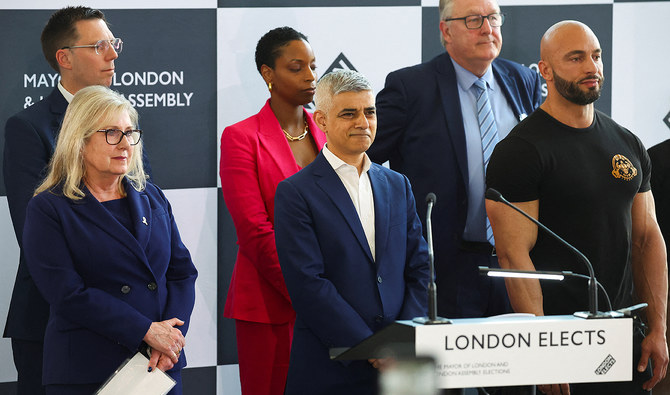
- Khan, an official with global renown, became the first Muslim mayor of a Western capital when elected in 2016
- Born in London in 1970, he grew up in public housing the Tooting area and slept in a bunk-bed until he was 24
LONDON: Sadiq Khan, who was Saturday re-elected for a record third term as London mayor, rose from humble roots to spar with world leaders and bring consequential change to the British capital.
The 53-year-old Labor party politician – a former human rights lawyer brought up on a London public housing complex – comfortably defeated Conservative rival Susan Hall for a third stint at City Hall.
He now overtakes predecessor Boris Johnson as the longest-serving holder of the post, which notably has powers over the emergency services, transport and planning in the city of nearly nine million.
Victory continues a remarkable journey for the Pakistani immigrant bus driver’s son, who became the first Muslim mayor of a Western capital when initially elected in 2016.
As mayor, he has made a name for himself as a vocal critic of Brexit and successive Conservative prime ministers, including Johnson, as well as for a feud with former US president Donald Trump.
The pair became embroiled in an extraordinary war of words after Khan criticized Trump’s travel ban on people from certain Muslim countries.
Trump then accused Khan of doing a “very bad job on terrorism” and called him a “stone cold loser” and a “national disgrace.”
The mayor in turn allowed an infamous blimp of Trump dressed as a baby in a nappy to fly above protests in Parliament Square during his 2018 visit to Britain.
“He once called me a stone cold loser. Only one of us is a loser, and it’s not me,” Khan told AFP during his 2021 campaign.
But Khan’s own tenure has not been without its controversies, particularly over last year’s expansion of an Ultra-Low Emission Zone into the largest pollution-charging scheme in the world.
The daily toll on the most-polluting vehicles prompted a fierce backlash in outer boroughs of Greater London, with anger at the extra financial burden during a cost-of-living crisis.
Khan has also been criticized for failing to get to grips with high levels of knife crime and since last year, his handling of large weekly pro-Palestinian protests.
Born in London in 1970 to parents who had recently arrived from Pakistan, Khan was the fifth child out of seven brothers and one sister.
He grew up in public housing in Tooting, an ethnically mixed residential area in south London, and slept in a bunk-bed until he was 24.
His modest background plays well in a city that is proud of its diversity and loves a self-made success story.
Khan still regularly recalls how his father drove one of London’s famous red buses, and his mother was a seamstress.
He is a handy boxer, having learnt the sport to defend himself in the streets against those who hurled racist abuse at him, and two of his brothers are boxing coaches.
He initially wanted to become a dentist, but a teacher spotted his gift for verbal sparring and directed him toward law.
He gained a law degree from the University of North London and started out as a trainee lawyer in 1994 at the Christian Fisher legal firm, where he was eventually made a partner.
He specialized in human rights, and spent three years chairing the civil liberties campaign group Liberty.
He represented Louis Farrakhan, leader of the Nation of Islam movement, and Babar Ahmad, a mosque acquaintance who was jailed in the United States after admitting providing support to the Taliban regime in Afghanistan.
Khan joined Labor aged 15 when Conservative prime minister Margaret Thatcher was in her pomp.
He became a local councilor for Tooting in the Conservative-dominated Wandsworth local borough in 1994, and its member of parliament in 2005.
He still lives in the area with his lawyer wife Saadiya and their two teenage daughters.
Labor prime minister Gordon Brown made him communities minister in 2008 and he later served as transport minister, becoming the first Muslim minister to attend Cabinet meetings.
In parliament, he voted for gay marriage – which earned him death threats.
As mayor, he vowed to focus on providing affordable homes for Londoners and freezing transport fares, but – like many in power around the world – saw his agenda engulfed by the pandemic.
He is London’s third mayor after Labor’s Ken Livingstone (2000-2008) and Johnson (2008-2016), with widespread speculation he could eventually try to follow in his predecessor and become prime minister.
Cyclone bears down on flood-hit Kenya, Tanzania
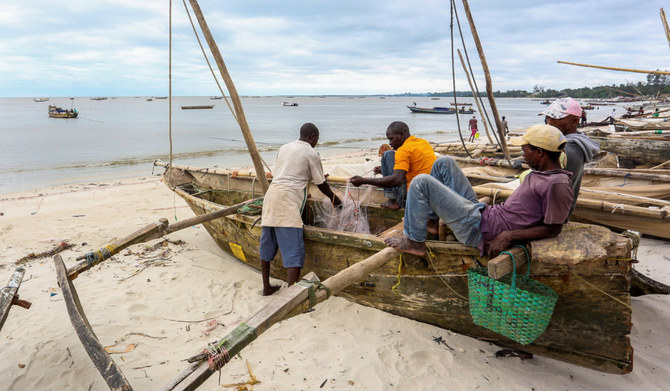
- The two East African neighbors are still recovering from last weeks devastating floods
- Kenya reported about 200 dead while Tanzaia said at least 155 died in floods and landslides
NAIROBI: Beaches were deserted and many shops closed on Saturday as heavy rains and winds from a tropical cyclone buffeted coastal areas of Tanzania and Kenya.
Both countries have gone on alert for Tropical Cyclone Hidaya, after weeks of torrential rains and floods that have wreaked havoc in many parts of East Africa and claimed more than 400 lives.
But there were no reports of casualties or damage as of Saturday afternoon as the cyclone rolled in from the Indian Ocean and made landfall in Tanzania.
“It’s so strange today to see only few people at the beach. We are used to seeing crowds, especially during the weekend,” said Yusuf Hassan, a resident of Tanzania’s main city Dar es Salaam.
“But I am sure people are afraid of the cyclone.”
The Kenya Meteorological Department said the cyclone was already being felt offshore, with strong winds exceeding 40 knots and waves of over two meters (over six feet).
It forecast heavy rainfall along the coast from Sunday, intensifying over the following two days, but said Kenya would only feel the effects of the cyclone from the “fringes” because of its location on the equator.
Interior Minister Kithure Kindiki announced a ban on all beach activities, swimming and fishing.
The Tanzanian Meteorological Authority said there had been strong winds and heavy downpours along the coast overnight.
In the Mtwara area, it said over 90 millimeters (3.5 inches) of rain had been reported in 24 hours, nearly twice the average May rainfall of 54 millimeters.
The agency advised people living in risk-prone areas and those involved in marine activities to take “maximum precautions.”
In the Zanzibar archipelago, all marine transport has been suspended.
“We believe it’s not safe to travel under such weather conditions caused by the cyclone,” Zanzibar Maritime Authority director general Sheikha Ahmed Mohamed told AFP.
Cyclone season in the southwest Indian Ocean normally lasts from November to April and there are around a dozen storms each year.
Kenyan President William Ruto on Friday described the weather picture as “dire” and postponed the reopening of schools indefinitely, with the approach of what he said was the nation’s first-ever cyclone.
Around 210 people have died in Kenya from flood-related incidents and nearly 100 are missing.
A further 165,000 have been forced to flee their homes, according to government data.
“No corner of our country has been spared from this havoc,” Ruto said in a televised address, blaming the devastating cycle of drought and floods on a failure to protect the environment.
“Sadly, we have not seen the last of this perilous period.”
On Thursday, the interior ministry ordered anyone living near major rivers or dams to leave the area within 24 hours or face “mandatory evacuation for their safety.”
It warned that 178 dams and reservoirs were at risk of spilling over.
Kindiki said 138 camps have been set up to offer temporary shelter to more than 62,000 people displaced by floodwaters.
Opposition politicians and lobby groups have accused the government of being unprepared and slow to respond despite weather warnings.
At least 155 people have also been killed in Tanzania by floods and landslides that have swallowed homes and destroyed crops.
East Africa is highly vulnerable to climate change and this year’s rains have been exacerbated by El Nino — a climate phenomenon typically associated with increased heat that leads to drought in some parts of the world and heavy downpours elsewhere.
Torrential rains have claimed at least 29 lives in Burundi since September, while weather-related deaths have also been reported in Ethiopia, Rwanda, Somalia and Uganda.
Late last year, more than 300 people died in rains and floods in Ethiopia, Kenya and Somalia, just as the region was trying to recover from its worst drought in four decades.




